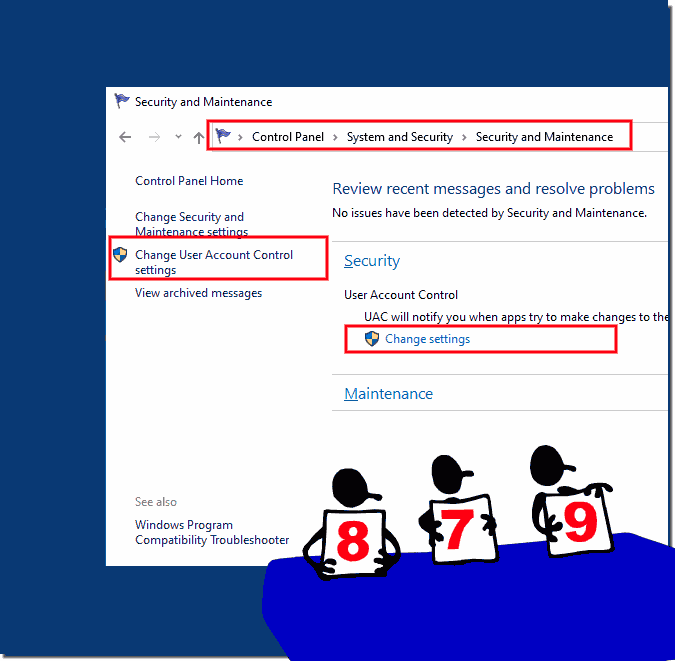Windows SmartScreen is a security feature in Windows 10, 11, and 12 designed to protect users from malware, phishing attacks, and other online threats. Here's an assessment of the strengths and weaknesses of Windows SmartScreen:Contents: 1. Strengths of Windows SmartScreen:
|
| (Image-1) Windows Smart Screen as protection against malware and the like! |
 |
1.) Strengths of Windows SmartScreen:
1. Protection against unknown software:
- SmartScreen checks unknown programs and files against a Microsoft database. If a file or application is considered suspicious, SmartScreen alerts the user.
2. Protection against malicious websites:
- The filter works in Microsoft Edge and blocks known phishing websites or those that host malware.
3. Dynamic database:
- The database is continuously updated so SmartScreen can also detect newly discovered threats.
4. Integration with Microsoft Defender:
- SmartScreen works seamlessly with other Windows security features, providing a more comprehensive protection system.
5. User-friendly alerts:
- When a potentially dangerous file or website is detected, the user receives a clear and understandable warning, without technical terms.
2.) Weaknesses of Windows SmartScreen:
1. Dependency on Microsoft databases:
- Protection is only as good as the database. Very new or specially tailored malware can go undetected.
2. Potential for false positives:
- Occasionally harmless programs are blocked, especially if they come from lesser-known developers.
3. Not cross-browser:
- The feature primarily protects Microsoft Edge users. Protection does not work directly on other browsers such as Chrome or Firefox.
4. Limited protection against advanced malware:
- SmartScreen is not a complete replacement for a comprehensive antivirus solution. Advanced Persistent Threats (APTs) or zero-day exploits require additional protection measures.
5. Easy to bypass for experienced attackers:
- A user with administrative rights can ignore SmartScreen warnings, making the system more vulnerable.
3.) Summary:
Windows SmartScreen is a solid defense against most everyday threats, especially for less tech-savvy users. However, it should be viewed as a complementary measure, not a standalone protection solution. For more comprehensive security, combine it with a powerful antivirus program and safe online practices.
4.) Is it equivalent for servers and Windows desktops?
The Windows SmartScreen is fundamentally similar in its functionality and effectiveness on different platforms such as Windows Server (e.g. 2025, 2022) and the client operating systems (Windows 12, 11, 10), but there are some differences in implementation and scope:
Common features of SmartScreen:
1. Basic functionality:
- On all platforms, SmartScreen checks files and programs against a Microsoft database and blocks potentially dangerous content.
- It protects against malicious websites, especially in combination with Microsoft Edge.
2. Integration with Microsoft Defender:
- SmartScreen is closely linked to Microsoft Defender and other Windows security services.
3. Protection against unknown apps:
- Protection against unknown or unwanted applications works similarly on client and server operating systems.
Differences between client and server operating systems:
1. Default configurations:
- Windows Server:
- Server operating systems such as 2022 or 2025 often have SmartScreen disabled by default because server admins want to have complete control over software operation and security policies.
- Servers are mostly used in controlled networks where protection is supplemented by firewalls, IDS/IPS systems and other measures.
- Windows 10, 11, 12:
- SmartScreen is enabled by default in client versions because these are often used by end users who have less technical know-how.
2. Intended use:
- Server operating systems:
- These are mostly used for special services (e.g. databases, web servers, domain controllers) and the likelihood of an administrator running malicious applications or visiting unknown websites is low.
- Client operating systems:
- Here there is a higher risk from downloading and installing software or surfing the Internet.
3. Limitations in environments:
- In server operating systems, SmartScreen is often controlled or disabled through group policy to avoid false positives and disruptions to critical services.
- In client operating systems, SmartScreen is designed for ease of use, including pop-up alerts for the end user.
4. Management and control:
- On servers, SmartScreen is most often controlled through tools such as the Group Policy Editor (gpedit.msc) or PowerShell .
- On clients, control is primarily through the Windows security interface.
Summary:
- For clients (Windows 12, 11, 10):
SmartScreen is a core protection mechanism, especially effective for end users who surf the internet a lot or install third-party software.
- For servers (Windows Server 2025, 2022):
SmartScreen protection is available, but often less relevant, as servers operate in a more controlled environment and other security solutions take priority.
The effectiveness is equivalent on both platforms, but the practical use depends heavily on the scenario. On servers, SmartScreen is mostly used as an additional security measure, while on clients it plays a crucial role in protecting against everyday threats.
FAQ 142: Updated on: 6 December 2024 09:27
